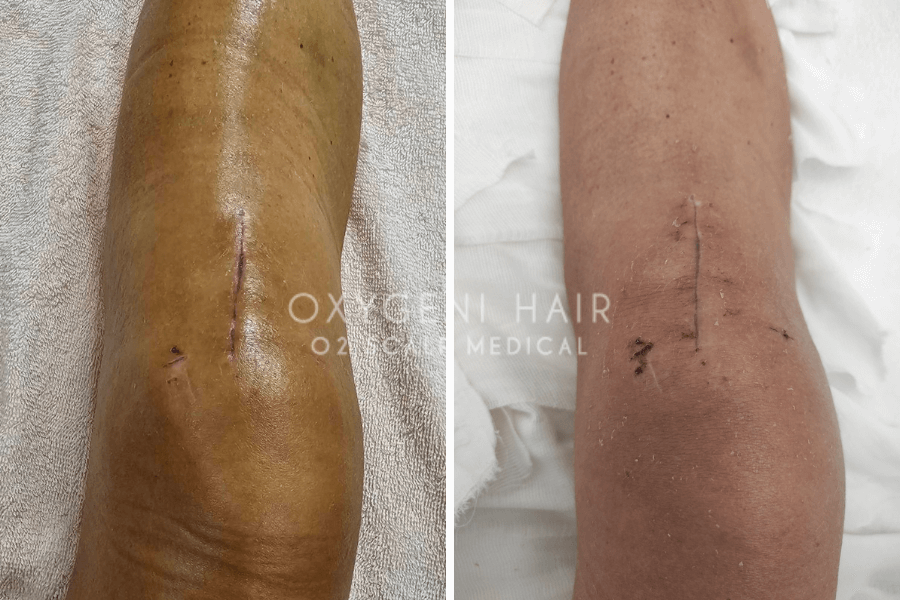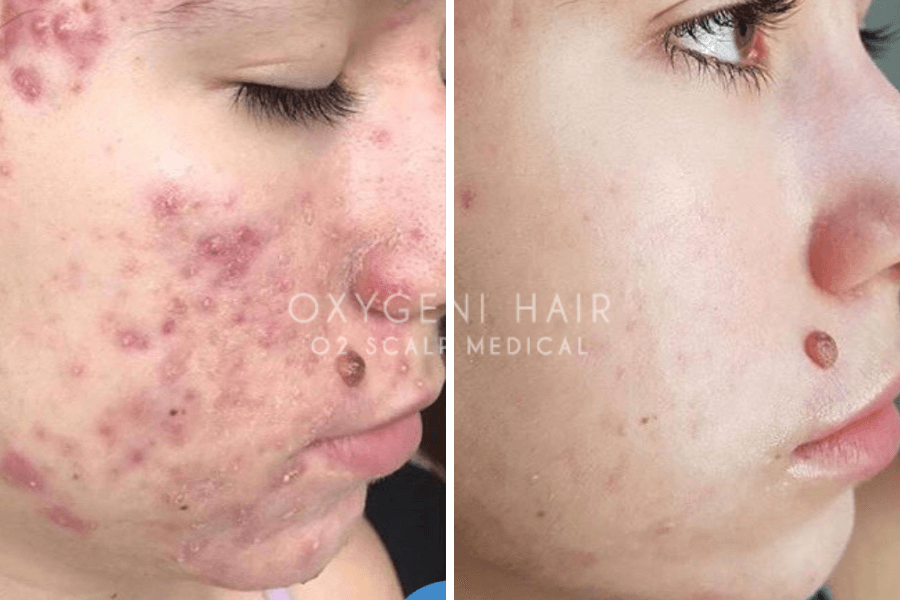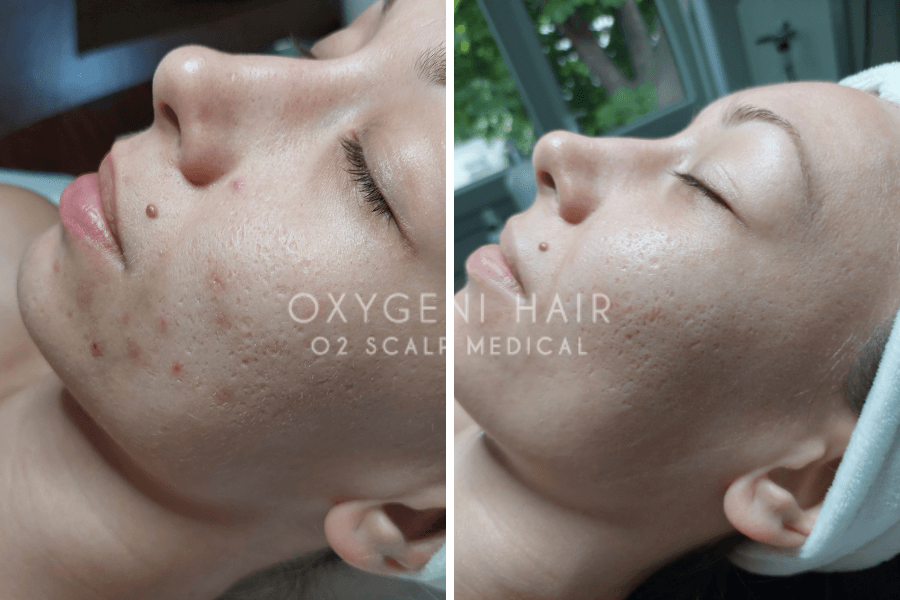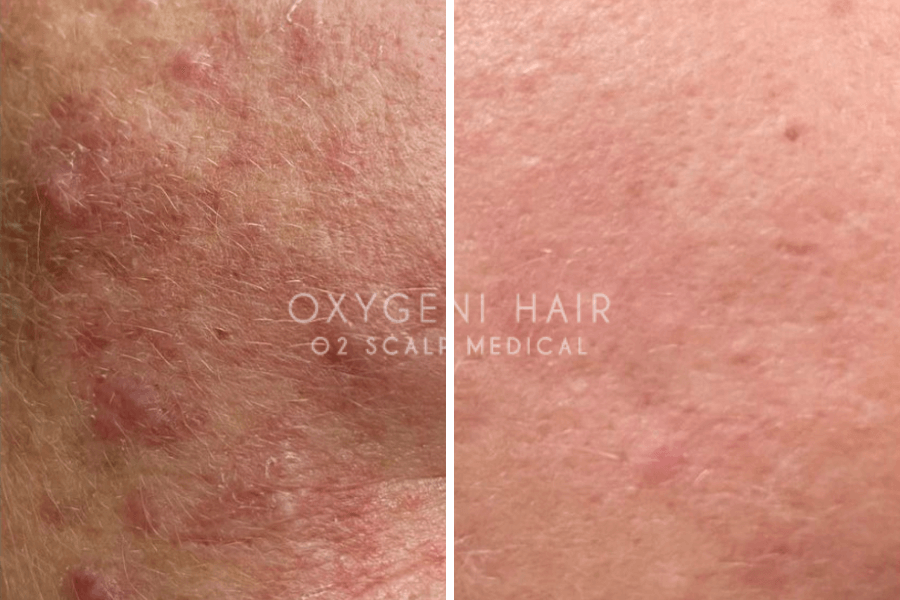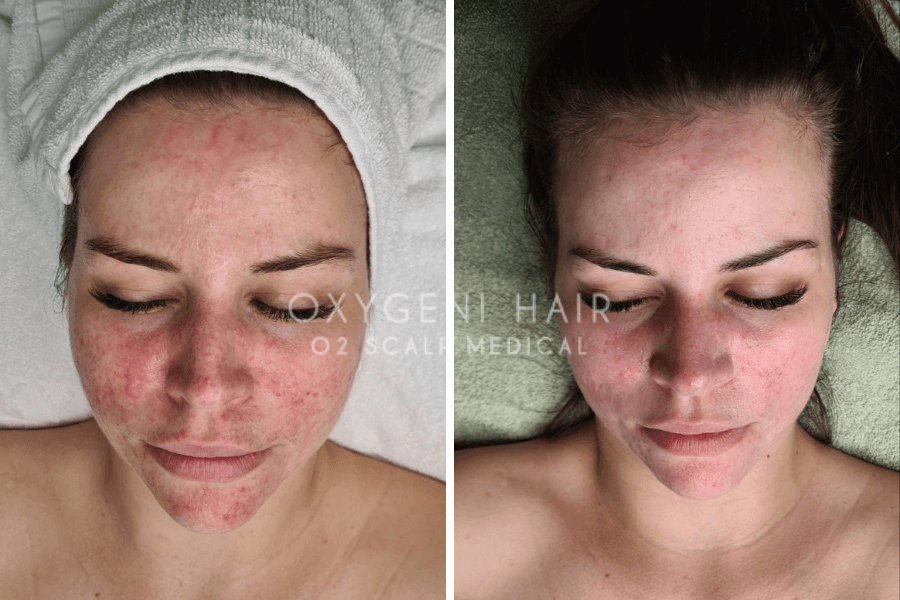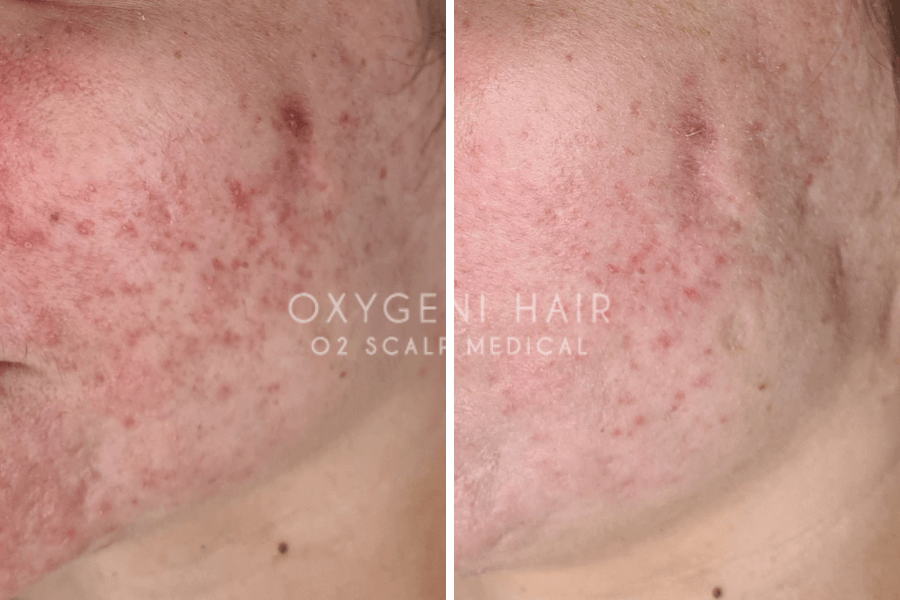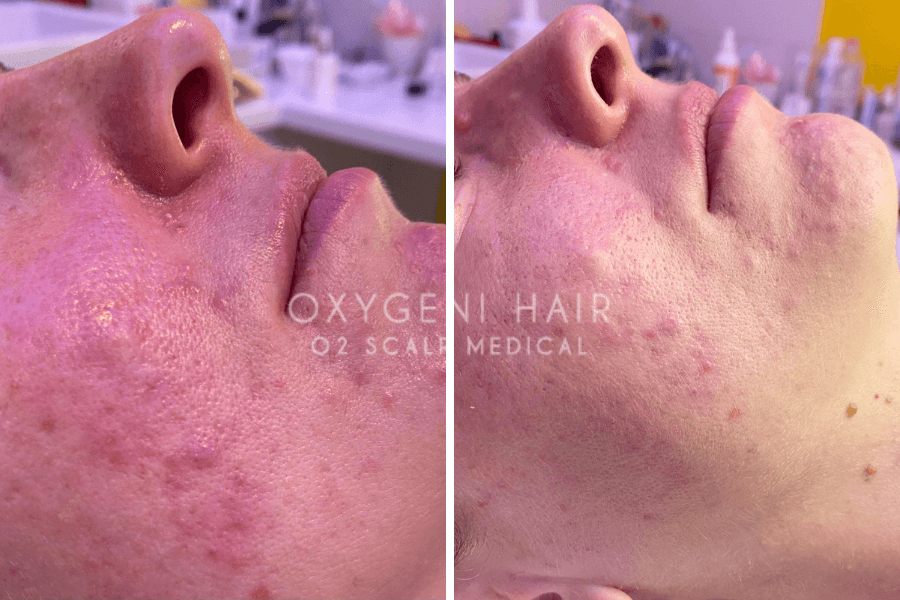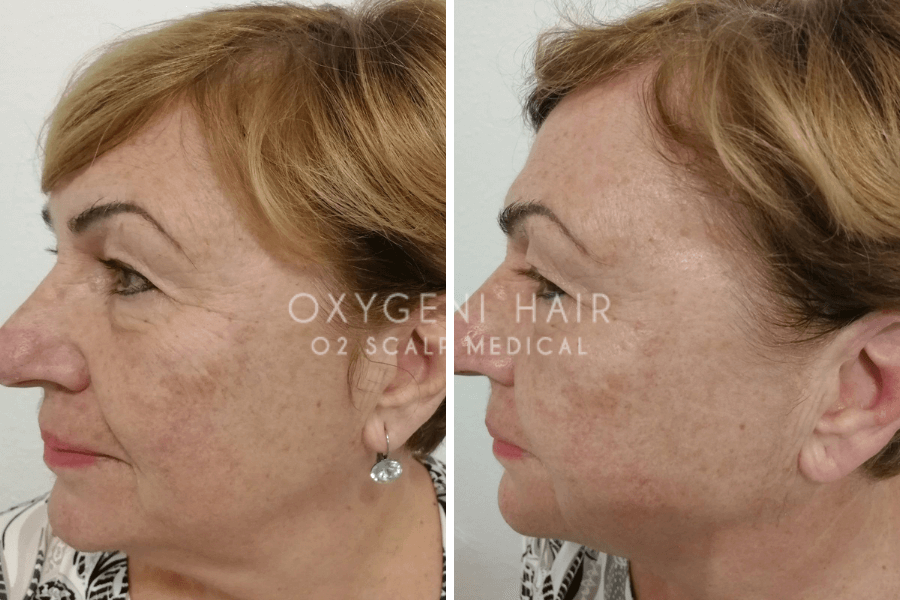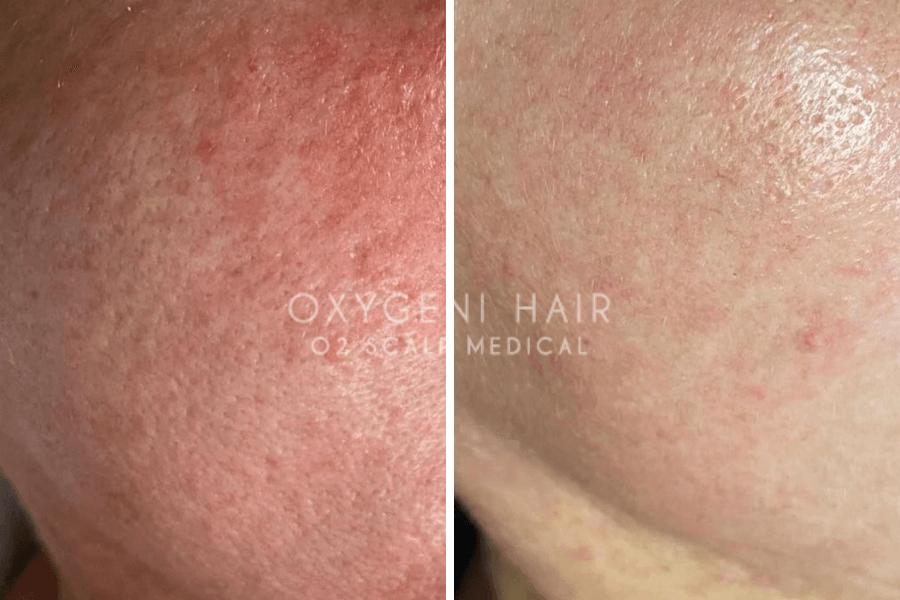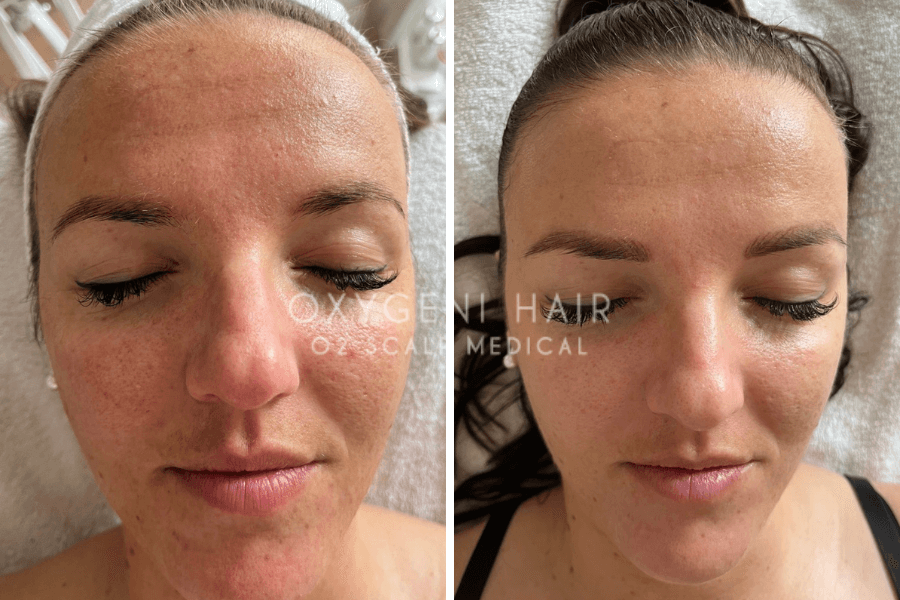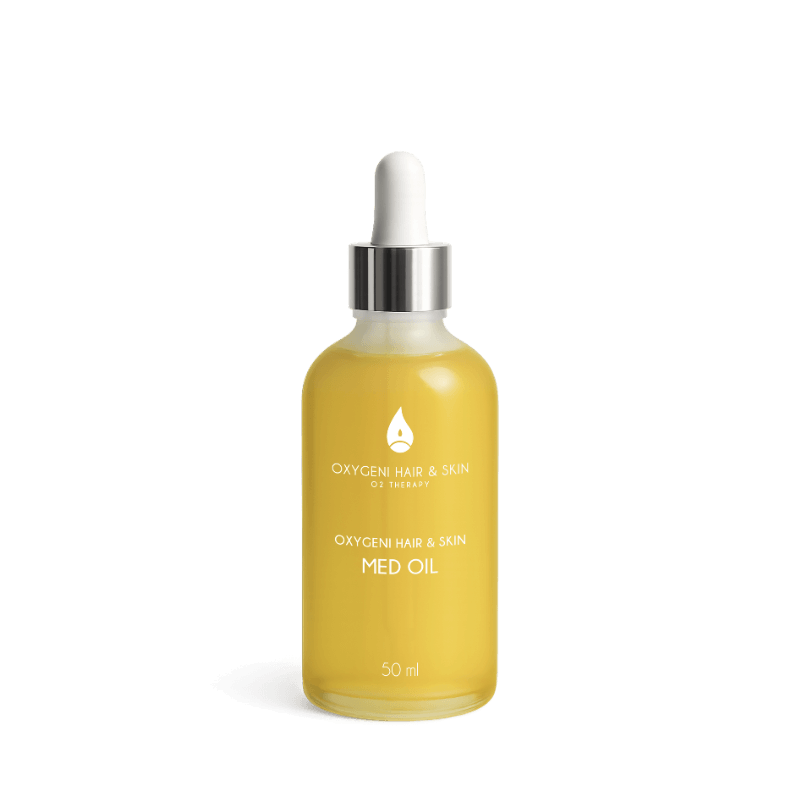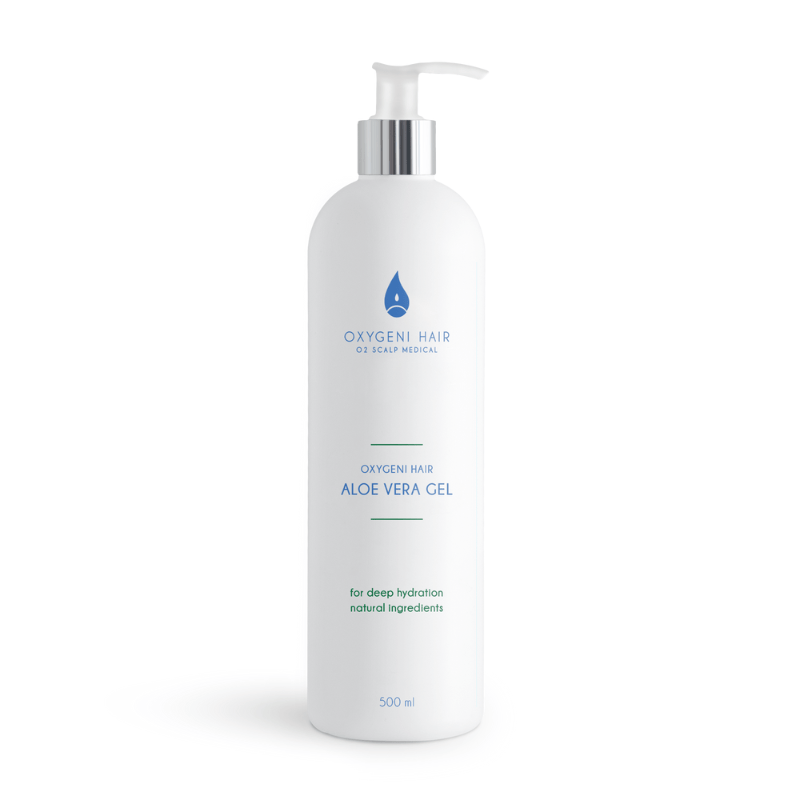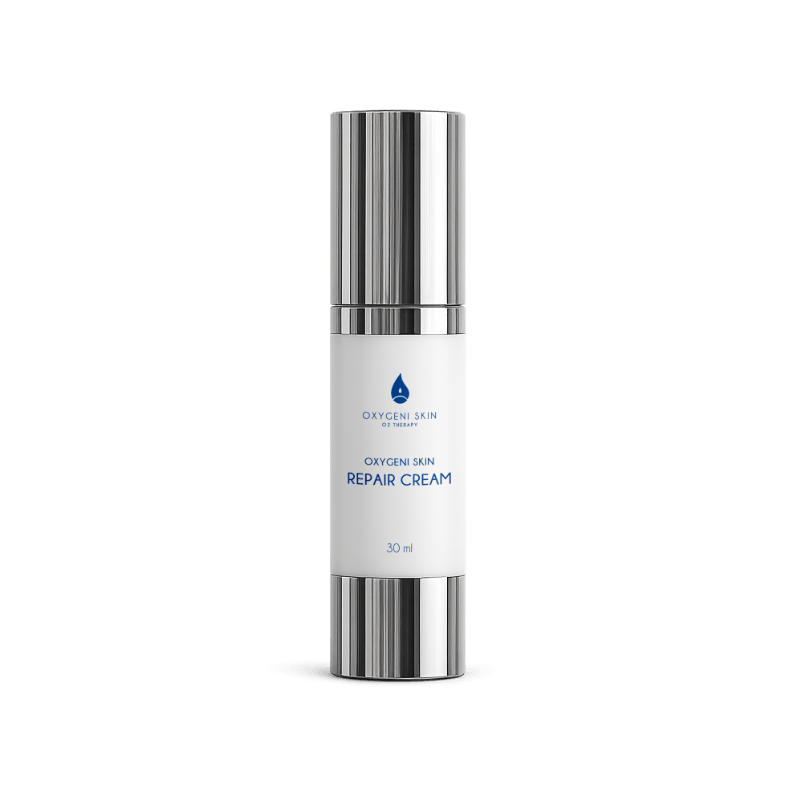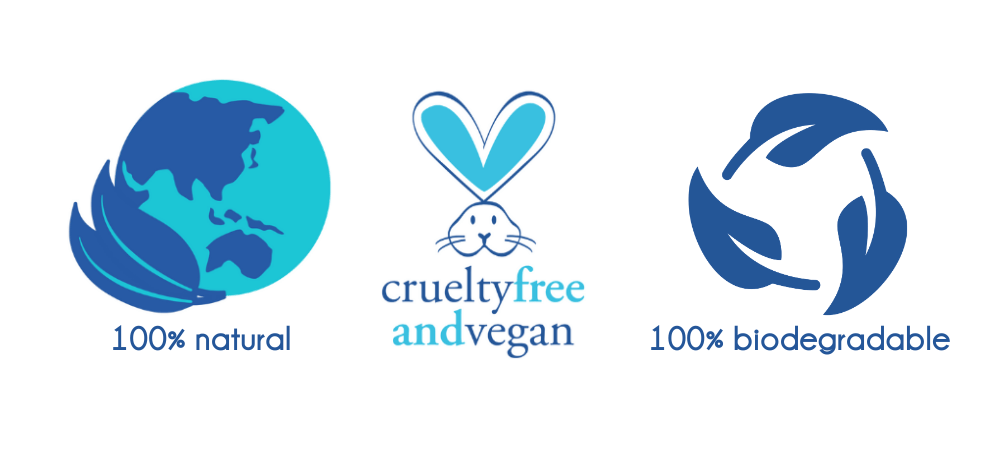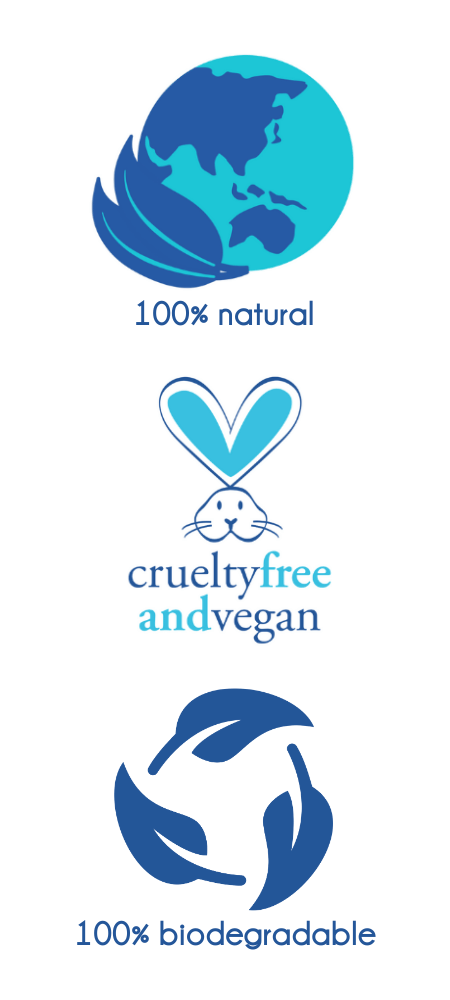Scar Treatment
Scars and Scar Treatment
The Best Practices for Eliminating or Reducing Scars
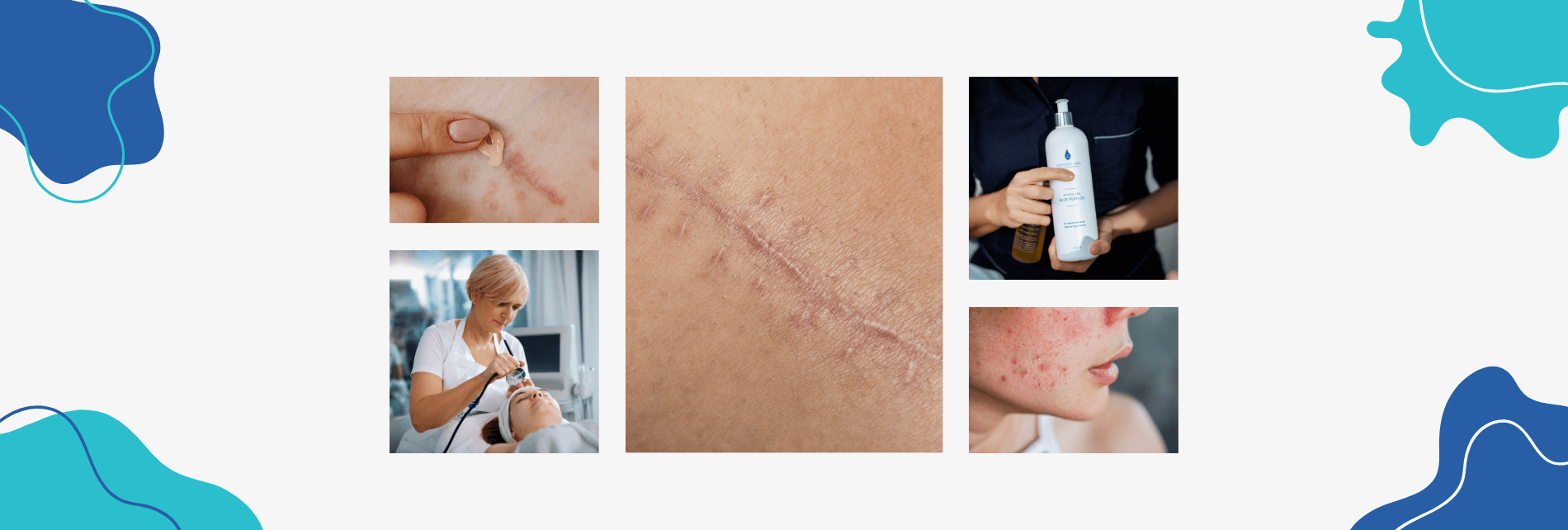
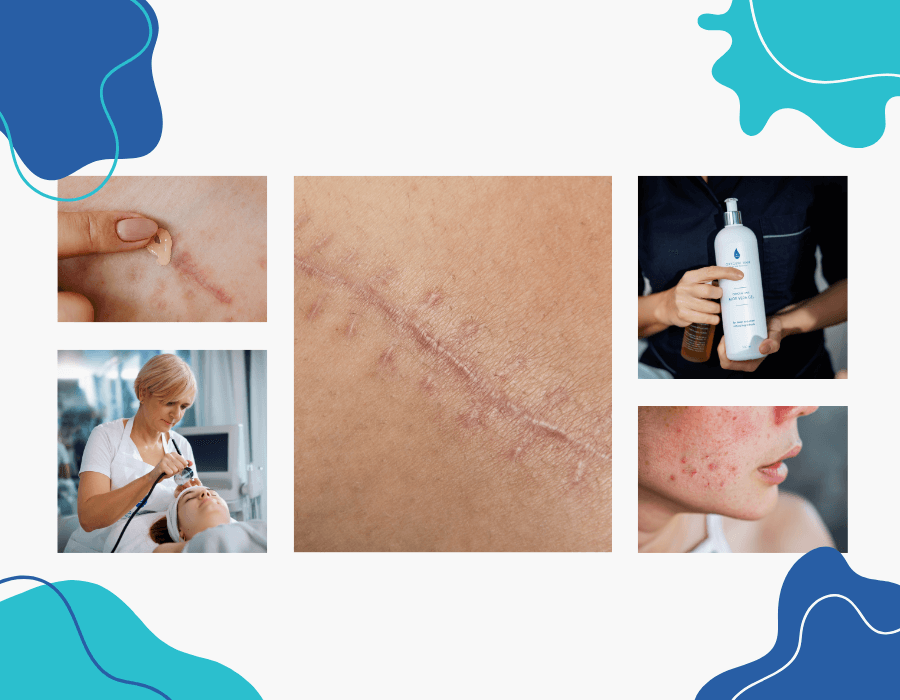
What is a Scar?
Scars are visible marks or skin surface abnormalities that form as part of the skin’s healing process. When the skin is injured, the body begins the healing process, and the cells try to repair the affected area. During scar formation, the arrangement of collagen fibers changes, creating a visible mark. Scars can be flat, raised, reddish in color, or pigmented, and they can vary in size.
But how does a scar form and what are the scar treatment options?
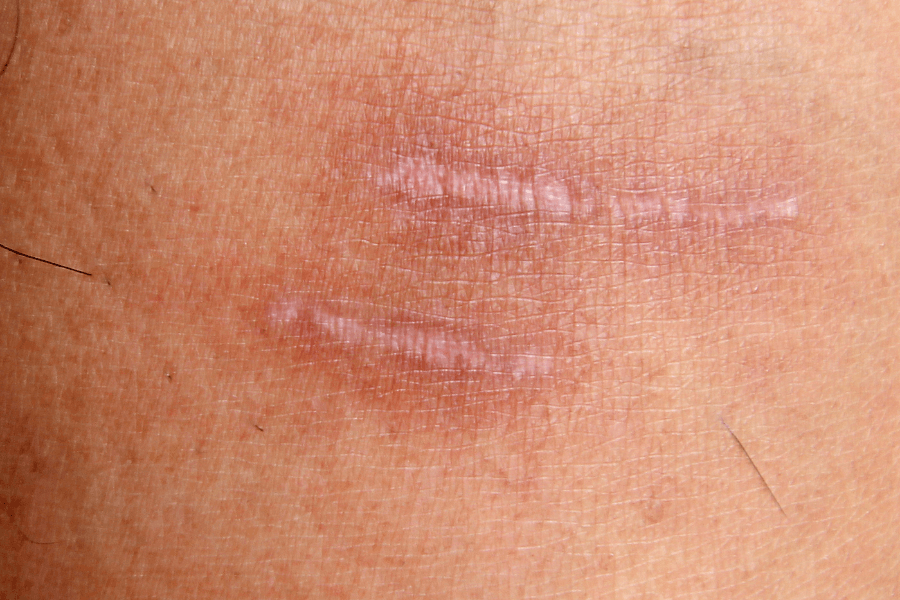
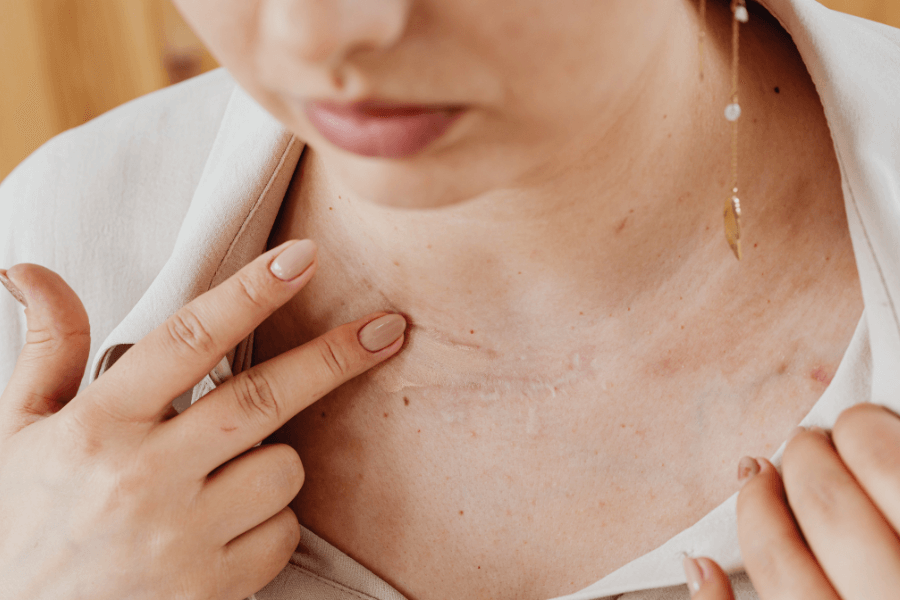
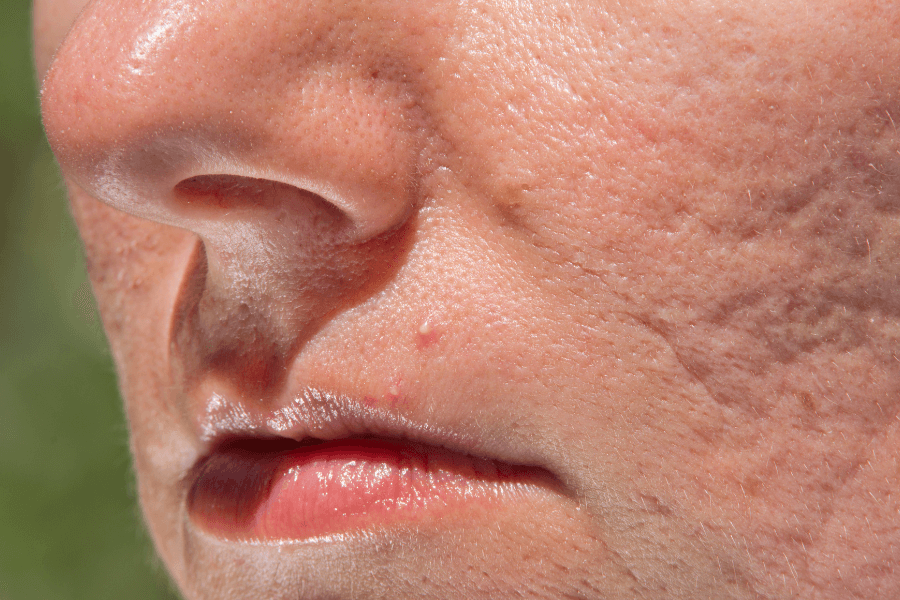
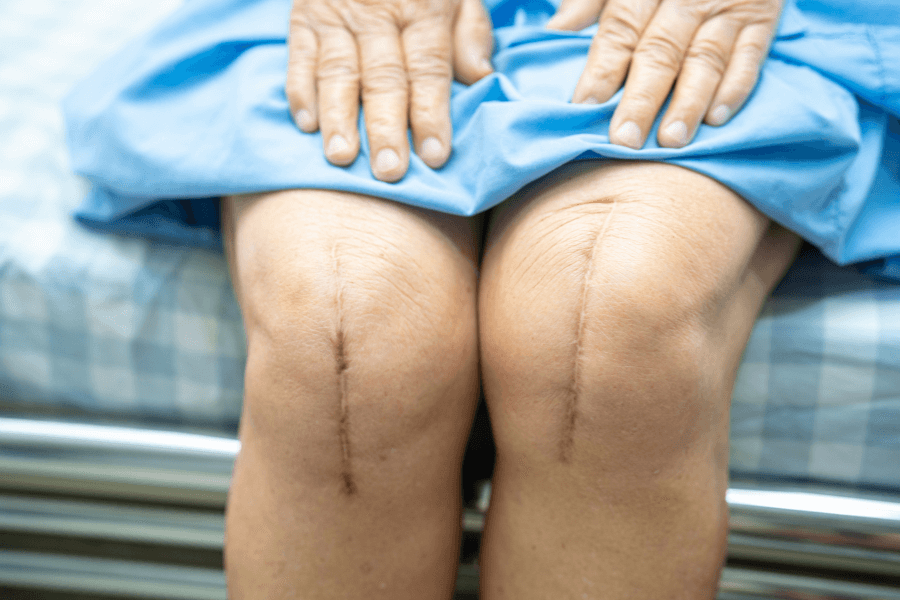
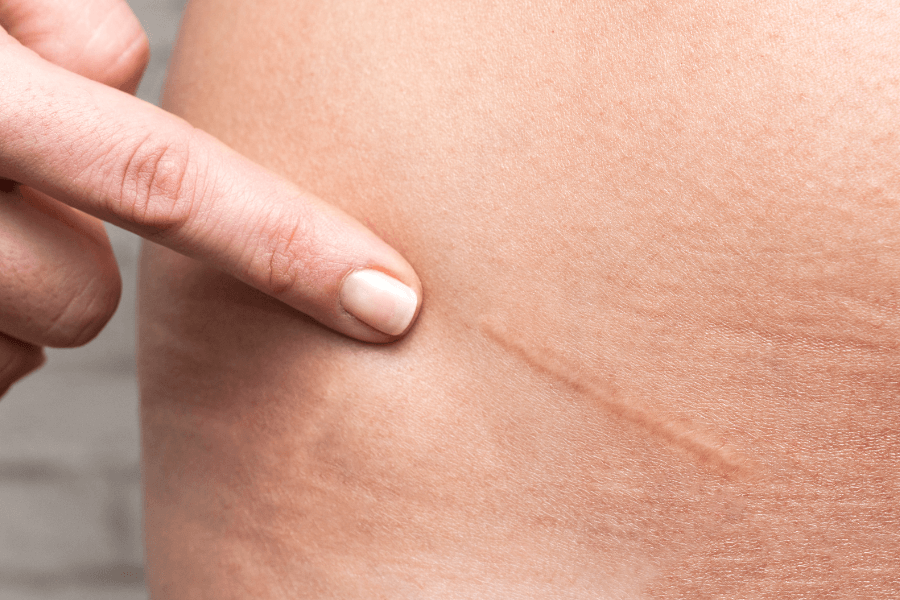
Scar Formation on the Human Body
The appearance of scars on the face or other areas of the body is a fairly common issue that many people have to deal with in everyday life. Scars can form due to a variety of factors, including those related to our environment, lifestyle, and inadequate stress management.
For example, external factors that can potentially trigger problems include inadequate skincare, excessive mechanical irritation of the skin (e.g., rubbing, scratching), as well as polluted air and excessive UV radiation. Internal factors include hormonal changes such as puberty, pregnancy, or menopause. Poor nutrition (e.g., consumption of sugary or fatty foods) and excessive stress can also exacerbate scar formation. Scars can also develop from injuries, surgeries, or inflammatory processes.
To effectively treat an existing condition, it is first worth identifying its causes, as understanding them can help find the appropriate treatment methods and prevent further scar formation.
The Process of Scar Formation
1.
The process of scar formation begins with a skin injury, which can be acne, a cut, a burn, a surgical incision, or another mechanical injury. The disruption of the skin’s integrity is the beginning.
2.
Immediately after the injury, the inflammatory response begins: Blood flows to the injured area to deliver oxygen and nutrients, causing swelling and redness. Then, white blood cells gather at the site of the injury to remove bacteria and dead tissue.
3.
After inflammation, the body starts repairing the tissue. Collagen is produced at the site of the injury to create new tissue. Initially, the collagen fibers are arranged in an unordered manner, resulting in rough and hard scar tissue.
4.
Over time, the scar tissue matures and rearranges, with the collagen fibers becoming more flexible in the skin. The blood supply to the skin gradually normalizes, and the color of the scar fades. Maturation can take months or even years, depending on the size and type of the scar.
5.
At the end of this process, the final scar forms.
Characteristics, Symptoms, and Types of Scars
The characteristic symptoms of scars include raised or indented abnormalities from the skin level, with colors differing from the surrounding skin (e.g., red, pink, or brown in keloid or not yet fully healed scars).
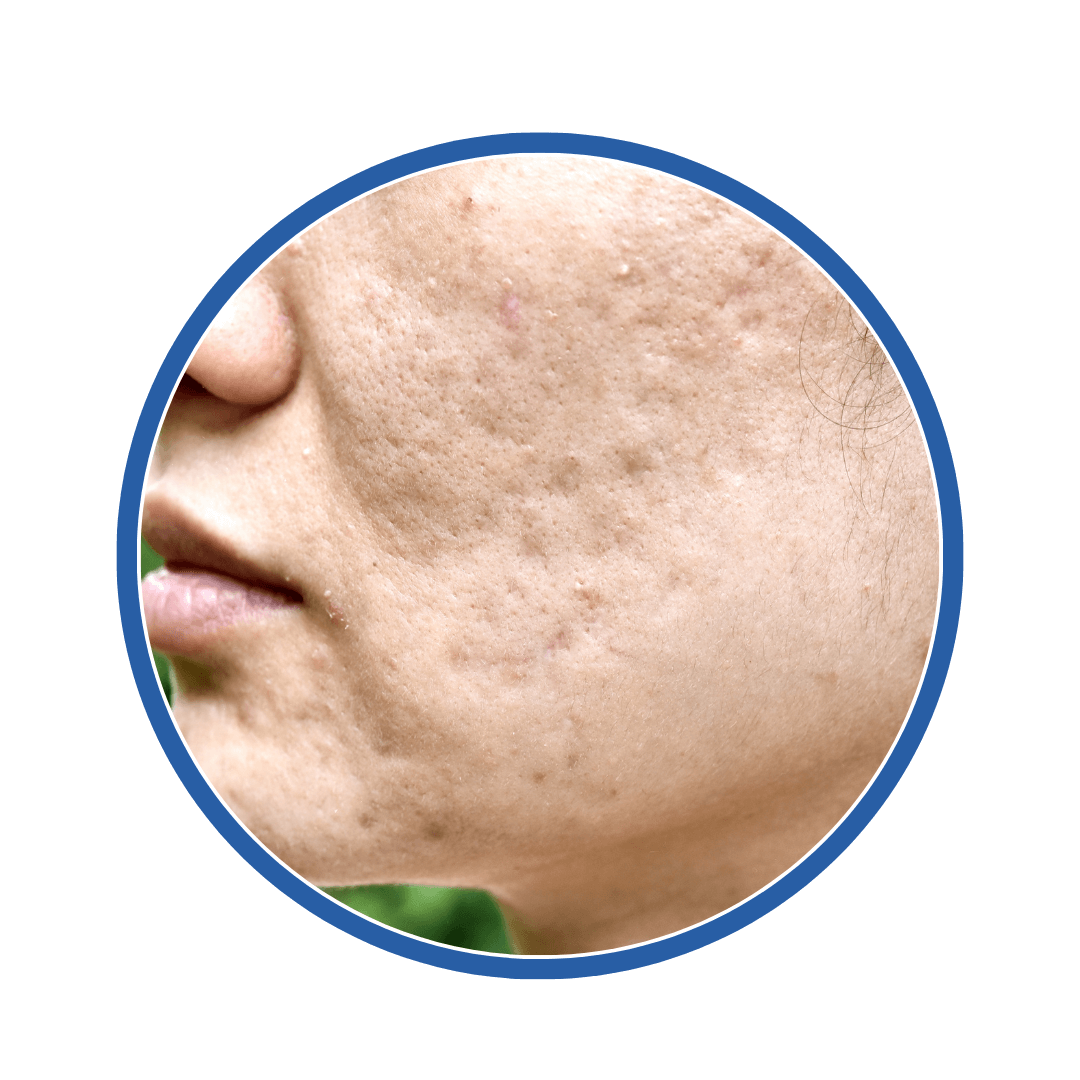
Atrophic Scars
Atrophic scars are the most common type of scars on the face, occurring after acne or chickenpox, and appear as small dents on the skin due to the loss of subcutaneous fat tissue. They particularly appear on the cheeks, chin, and forehead. These scars form small pits that appear as small, irregular-shaped unevennesses on the skin’s surface.
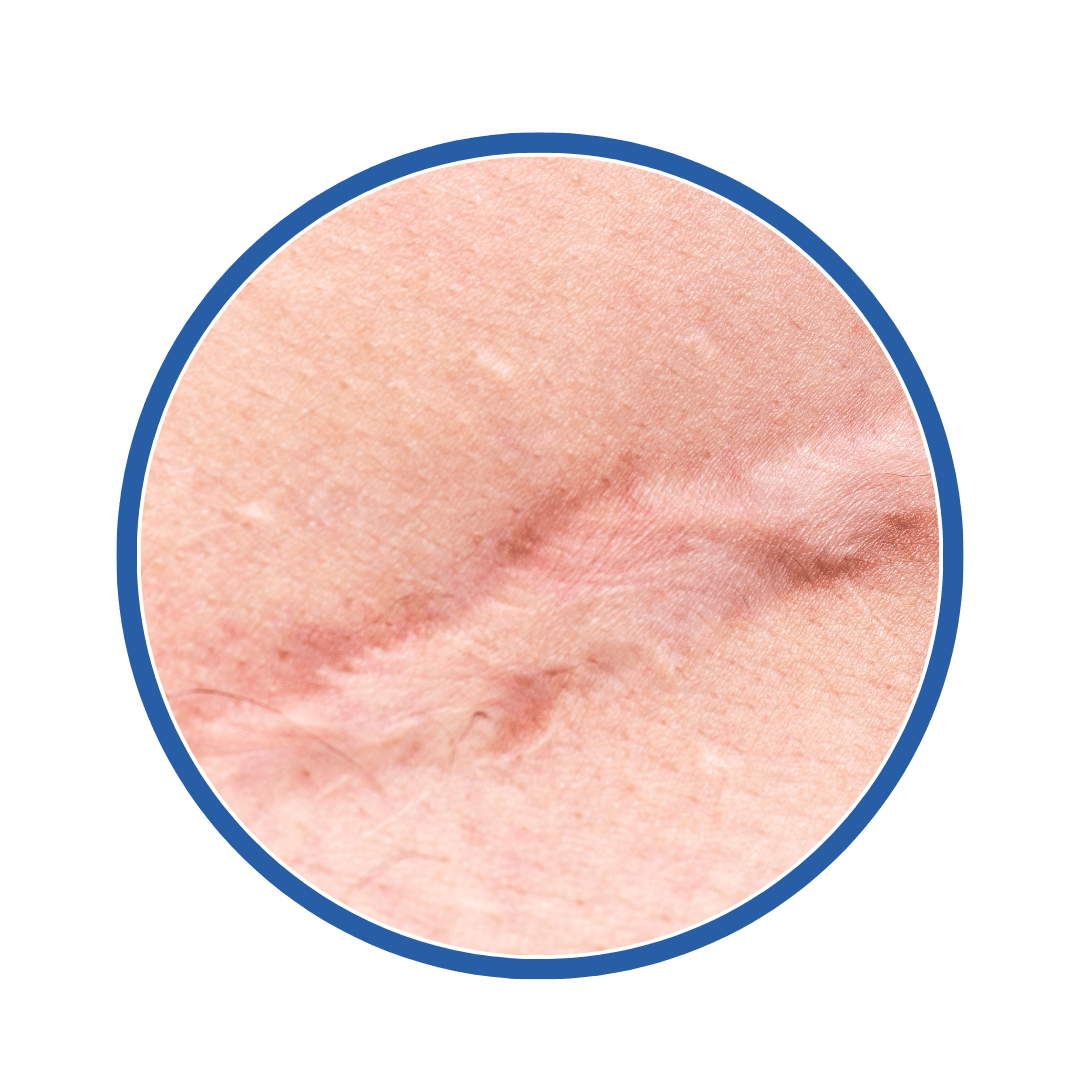
Hypertrophic Scars
The other two types of scars form when there is a disruption in wound healing. Hypertrophic scars appear as raised, hard tissue lumps. These do not extend beyond the wound’s boundaries, but they can still be aesthetically not pleasing, as the scar may even have a purplish hue when it has completely healed. They can form at the site of vaccinations, after surgery, or from other injuries.
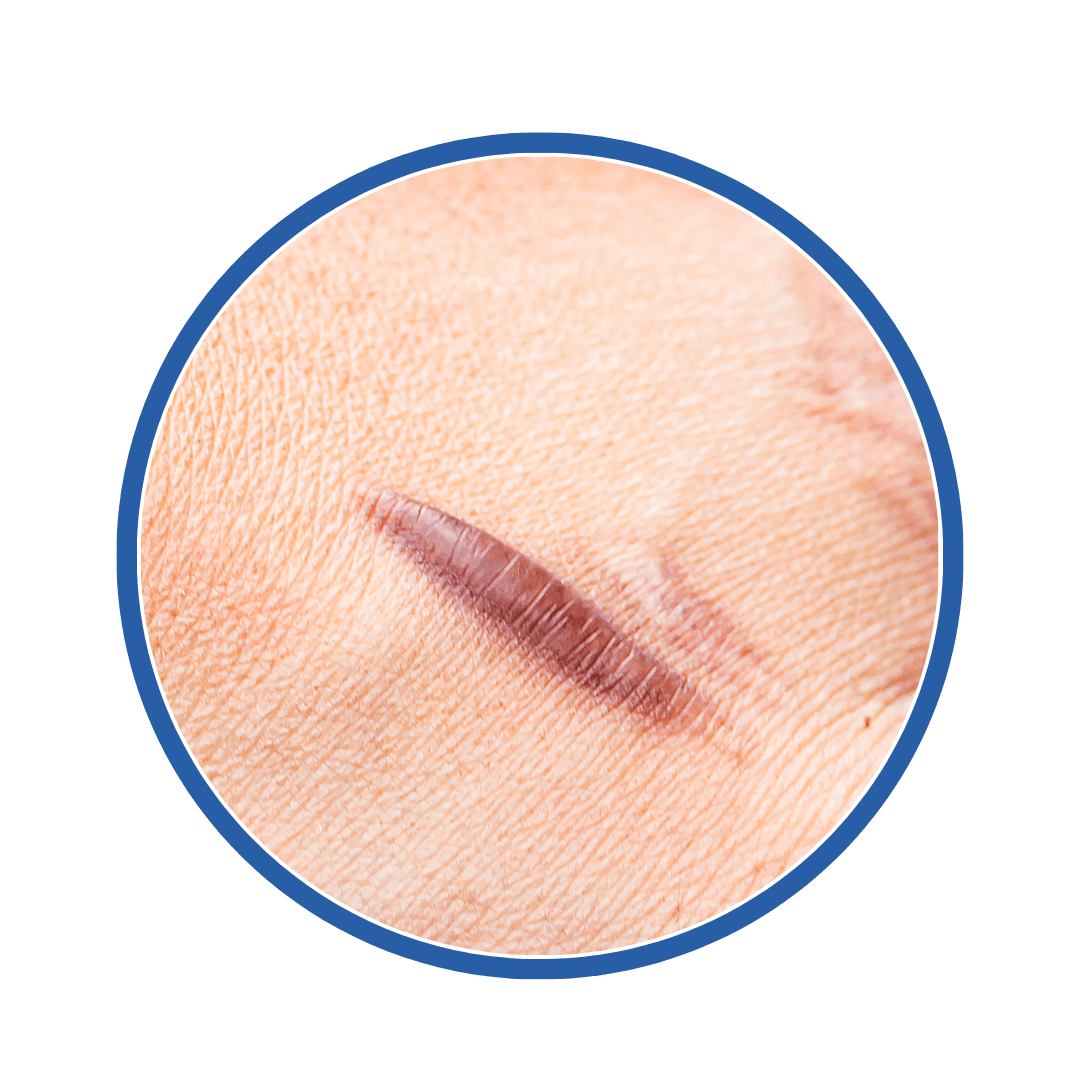
Keloid Scars
The third type, keloid scars, involves pathological scar overgrowth, which typically occurs on the earlobe, the area in front of the sternum, and on the shoulder. They are noticeable and often heal in colors that are markedly different from the skin’s base color, such as bright red, purple, or flesh tones. Keloid predisposition is genetically inherited, so it cannot be prevented. They are completely harmless and cannot become cancerous, but they can be bothersome to the person affected because, by nature, they do not retract like many hypertrophic scars.
What Contributes to or Worsens Scars?

Environmental Factors: The effects of the environment play a significant role in scar formation. Polluted air, dust, and harmful chemicals in the air can all contribute to skin irritation and inflammation, which can later cause acne and subsequently scars. However, avoiding urban smog and polluted air is not always sufficient. Intense UV radiation can also damage the skin, promoting scar formation, so spending time outdoors, even at the beach during vacation, in strong sunlight, can also contribute to scar development. Additionally, weather conditions such as excessive cold or heat can also affect the condition of the skin, increasing the likelihood of scar formation.

Nutrition and Lifestyle: Nutrition is arguably one of the most important foundations for healthy skin. An unhealthy diet, such as one high in sugar and fat or low in vitamins and minerals, will sooner or later negatively affect skin health. A diet low in antioxidants is not capable of adequately protecting the skin from damage caused by free radicals, which can also lead to scars. Free radicals are molecules largely responsible for skin aging and scar formation, which is why it is important to manage them in the body through healthy eating. Lack of proper hydration can also exacerbate skin problems.

Diseases and Hormonal Factors: Many diseases and hormonal imbalances can contribute to scar formation. Hormonal changes such as puberty, pregnancy, or menopause are often associated with scar formation because they significantly affect skin conditions, leading to acne, and blackheads, which can later heal with scars. Diseases can also cause scars, potentially due to skin sensitivity or acne development. For example, polycystic ovary syndrome (PCOS) is often associated with acne, which can later cause scars. Autoimmune or immune system diseases also predispose to skin problems. Nevertheless, genetics is also a determining factor, so it is possible that even a completely healthy body can be more prone to scarring due to certain skin types.

Mental Factors: Mental factors such as stress and anxiety also have a significant impact on the skin. High cortisol, or stress hormone levels, can trigger inflammatory reactions in the body, which can exacerbate acne and other skin conditions, thereby increasing the likelihood of scar formation. Stress can also worsen sleep quality and overall life quality, which also negatively affects skin health.
CORRELATION WITH LIFESTYLE
A healthy lifestyle, proper nutrition, and skincare combination can significantly contribute to the prevention and treatment of scars. Balanced nutrition is essential for maintaining skin health and preventing scar formation. A healthy diet provides the necessary vitamins, minerals, and antioxidants that promote skin regeneration and reduce inflammation. Proper hydration is also crucial, as water helps in detoxification and skin hydration.
Avoid:
Scar Treatment, But How? The first step is to avoid certain foods and habits if we want existing scars to fade as soon as possible or disappear completely. Let’s see what is on the blacklist:
The first group includes high-sugar foods because sugar and foods with a high glycemic index (e.g., white bread, sweets, sodas with rapidly absorbed carbohydrates) increase inflammation and can worsen acne, which ultimately leads to scar formation.
Although not a food category, smoking and alcohol consumption should also be avoided as they can exacerbate skin conditions. Both dehydrate the skin and impair healing processes.
Some studies suggest that dairy products, especially milk, can increase acne formation, which can result in scars. Dairy consumption does not cause acne for everyone, so it’s worth checking if it could be a triggering factor based on personal experience.
It is also advisable to limit or completely avoid processed foods. Additives, preservatives, and trans fats in these foods can cause inflammation in the body. In healthy eating, it’s important to pay attention to the source of food, so if it is likely processed, it can often lead to scars in the end.
Recommended:
A balanced diet is essential for maintaining the skin’s health. Specifically recommended foods for scar treatment and preventing further scar formation include:
Vegetables and fruits such as berries, spinach, broccoli, and carrots can aid in skin healing and reduce inflammation.
Fatty fish (e.g., salmon, mackerel), flaxseeds, chia seeds, and nuts have anti-inflammatory properties and support skin regeneration.
Zinc plays a crucial role in the skin healing process. Good sources include legumes, seeds, nuts, and whole grains.
Citrus fruits, strawberries, kiwi, and bell peppers help in collagen production, which is essential for skin healing.
Avocados, almonds, and sunflower seeds support skin regeneration and protection.
Did you know? Symptoms could be caused by Food Intolerance!
Food intolerances and allergies can often contribute to skin problems, including the formation of scars. Intolerances, such as gluten sensitivity or lactose intolerance, can trigger inflammatory reactions in the body, which can worsen the condition of the skin. In such cases, avoiding the products that cause the intolerance is essential for effective scar treatment. Recognizing food sensitivities and avoiding specific foods can help reduce skin problems, but adhering to other lifestyle factors is also important to resolve the issue. Unlike allergies, food intolerances can be reversible in certain cases, but they require great attention and self-discipline from the person suffering from them.
The Importance of Hormonal Balance
Maintaining hormonal balance is essential for preserving the health of the skin during scar treatment. Hormonal conditions such as puberty, the menstrual cycle, pregnancy, and menopause have a significant impact on the skin and can increase the risk of scarring. Healthy eating, regular exercise, and effective stress management all contribute to maintaining hormonal balance, which in the long run improves skin condition and reduces the likelihood of scar formation.
Hormones that can influence the process of wound healing and scar formation:
Cortisol
Cortisol is a stress hormone produced by the adrenal glands. Its natural level is highest in the morning, as without this elevated cortisol level, we wouldn’t even be able to get out of bed. Therefore, it is necessary, but neither too low nor too high cortisol levels are ideal, as this imbalance in hormones triggers a chain reaction that can affect other vital organs. In cases of high cortisol levels, due to its anti-inflammatory effect, wounds heal more slowly, and due to a lack of collagen, the scar tissue becomes weaker and less flexible.
Insulin
Insulin not only plays a role in regulating blood sugar levels but also promotes the uptake of glucose by cells and provides them with energy, which is fundamental to the healing process. Under the influence of insulin, cells divide and regenerate more quickly, accelerating wound healing. In people with diabetes, wound healing is slower for this reason, and the risk of infection is also higher.
Estrogen and Testosterone
Estrogen and testosterone also play important roles in wound healing. Estrogen stimulates collagen production, thereby increasing skin hydration and improving blood circulation, which results in faster healing. Therefore, women who have entered menopause may find that their wounds heal more slowly due to decreasing estrogen levels. Men experience something similar when testosterone levels are higher. Not only is wound healing slower, but there is also a greater likelihood of scar formation.
Growth Hormone (GH)
Growth hormone is crucial in promoting cell division and tissue regeneration. It stimulates the activity of fibroblasts, which produce collagen and aid in the formation of new tissue. A deficiency in GH can result in delayed wound healing and weaker scar tissue.
Stress Management
A stressful lifestyle can significantly impact skin health and scar formation through several mechanisms. Chronic stress increases inflammation in the body, and prolonged stress weakens the immune system, which can result in slower wound healing and a higher risk of infections. Stress can also disrupt hormonal balance, which may increase sebum production and worsen skin issues like acne. As a result, acne scars are more likely to form and may be more severe.
Moreover, stress slows down the renewal process of skin cells, causing scars to remain visible for longer and making them harder to heal.
Tips for Reducing and Avoiding Stress:
Regular exercise is proven to reduce stress by releasing endorphins, the so-called “happiness hormones.” Daily walks, running, yoga, or any preferred sport can help manage stress. Meditation and mindfulness techniques help you stay in the present moment and reduce stress. Incorporating just a few minutes of meditation or mindfulness practices into your daily routine can significantly lower stress levels.
Relaxation techniques such as meditation or yoga are recommended when dealing with stress. Exercise not only helps reduce stress but also improves skin health by enhancing circulation and promoting detoxification.
The Role of Exercise in Alleviating Problems
Exercise improves circulation and sweating, which are crucial for detoxifying the body. During sweating, toxins are expelled through the skin, aiding in skin cleansing and regeneration. Better circulation increases the delivery of nutrients and oxygen to skin cells, supporting the skin’s healing processes and helping scars heal more quickly.
The lymphatic system plays an essential role in detoxification and immune function. Exercise stimulates lymphatic circulation, which helps remove toxins and enhances the effectiveness of immune cells. Better lymphatic circulation supports the skin’s healing processes by reducing inflammation and regenerating damaged tissues. Therefore, the proper functioning of the lymphatic system is key to faster and more effective scar healing.
Scar Treatment
Salon Treatment Methods
There are numerous methods for treating scars, including the use of topical creams such as gels and corticosteroids, which can help reduce inflammation and mitigate scar formation. Salon treatments like microdermabrasion, chemical peels, and laser treatments can also be effective.
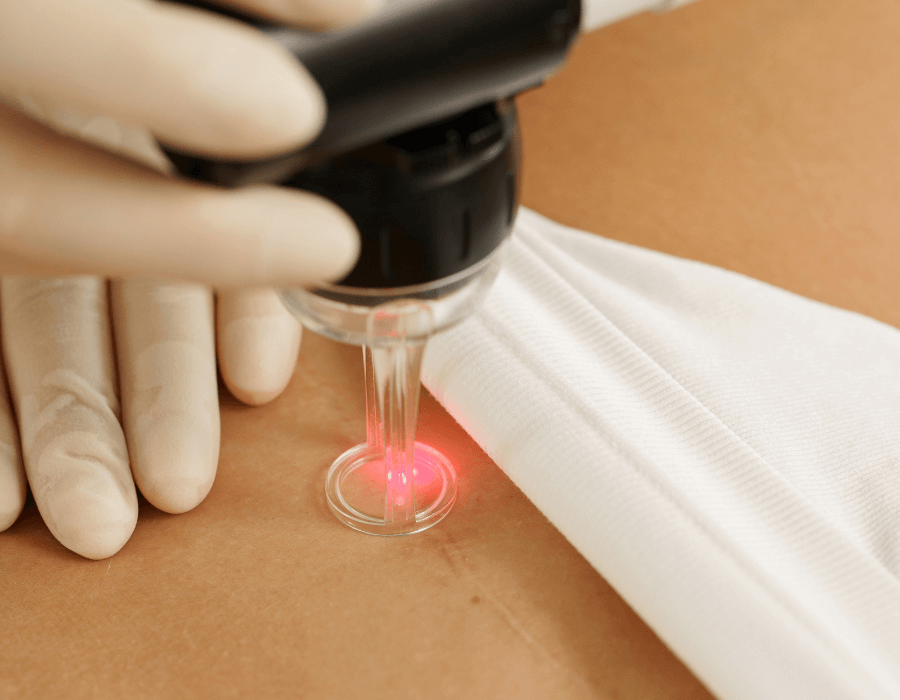
Laser Treatment
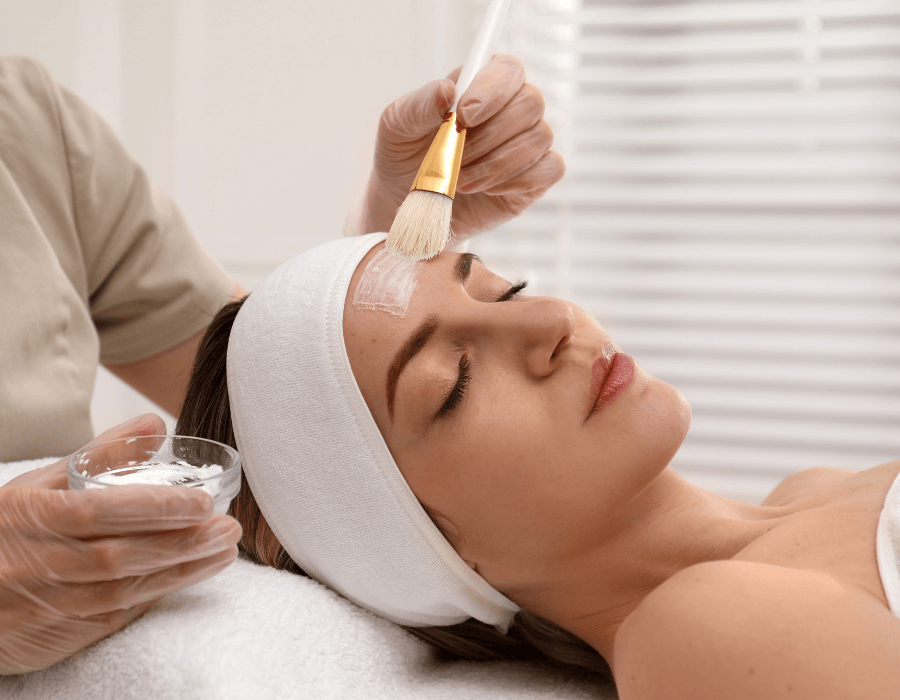
Chemical Peeling
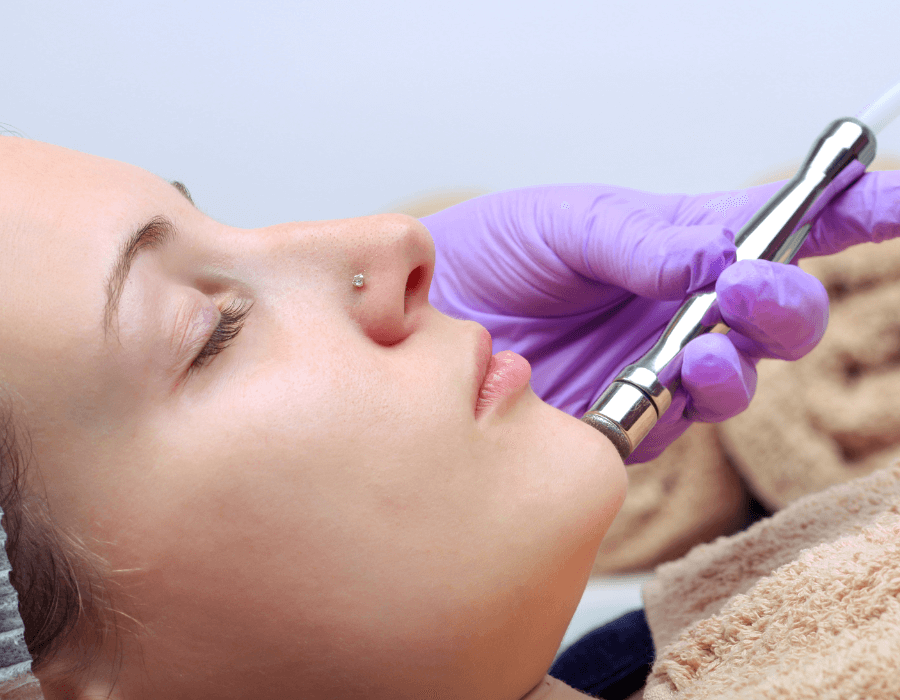
Microdermabrasion
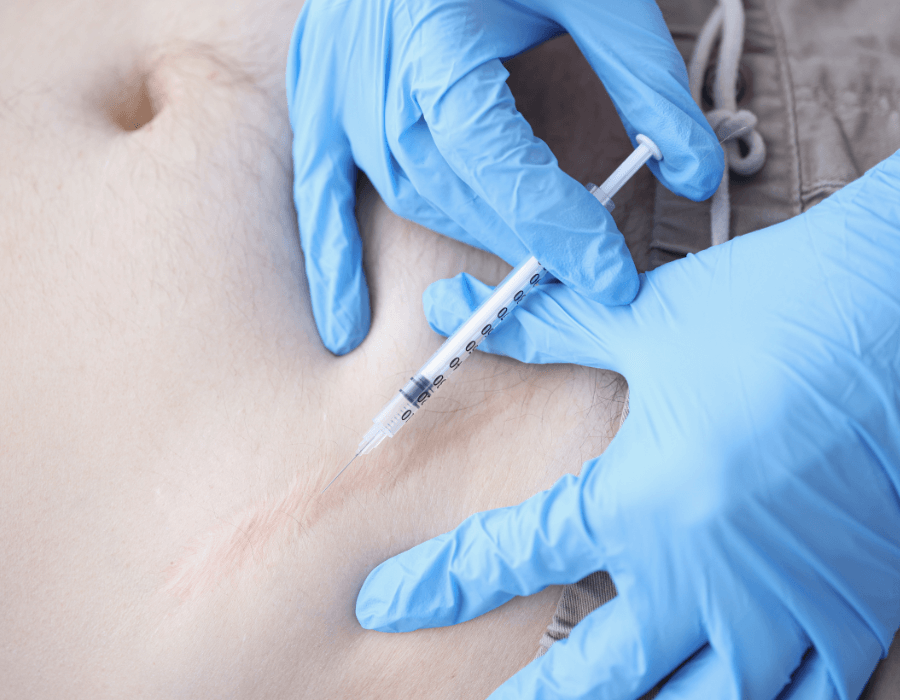
Injection Treatments
Our cosmetic advice: Cosmetic oxygen therapy for scar treatment
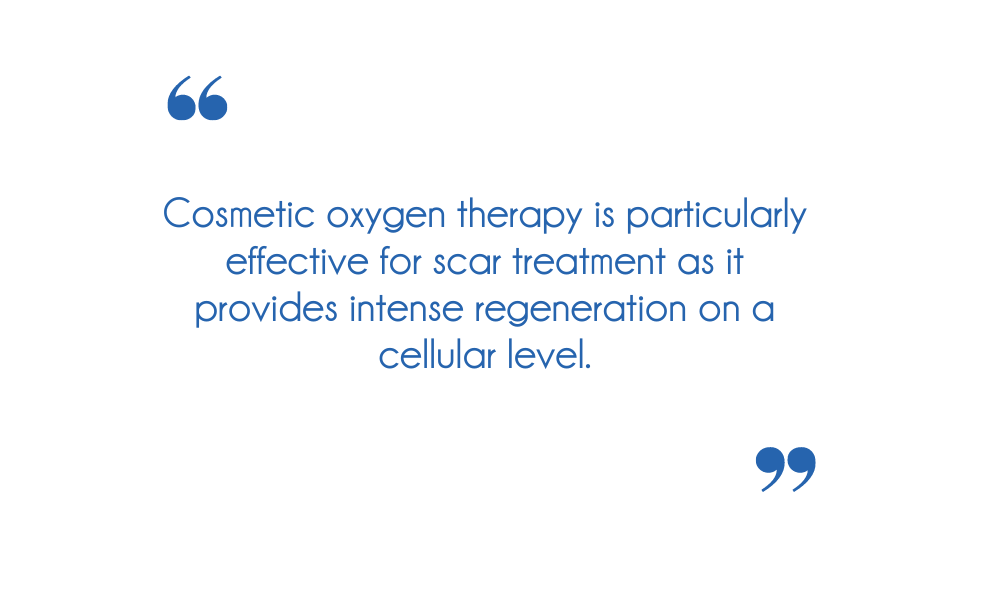

Scar Treatment with Cosmetic Oxygen Therapy
Cosmetic oxygen therapy is an excellent solution for scar treatment. The oxygen deeply penetrates the skin layers, stimulating cell activity and strengthening the skin’s structure. This process speeds up healing and reduces existing inflammation. Additionally, it prevents further acne formation, thus protecting the skin from the development of additional scars.
The therapy uses natural active ingredients that are gentle yet effective, making the treatment completely safe and risk-free. Combined with individualized treatment plans and a home skincare routine, it can achieve noticeable results. Oxygen therapy can be applied to all skin types and, since it does not cause skin sensitivity to light, it can be used throughout the year. It helps optimize the skin’s pH balance, further enhancing its natural protection and health. Through the therapy, the skin is cleansed of impurities and regains its natural, healthy glow.
Cosmetic results:
Why is your skincare routine important?
Regular and proper home care is essential for effective scar treatment. A well-established routine helps prevent scar worsening, promotes skin healing, and supports the long-term results of treatments. Home care contributes to skin regeneration, improves skin texture, and reduces the visibility of scars.
Bad Habits
Habits to avoid include picking at or scratching scars, which can lead to inflammation and further scarring. Harsh cleansers and skin-irritating products should also be avoided in your skincare routine. Additionally, it is important not to use excessively aggressive treatments or frequent exfoliation, as these can damage the skin’s protective layer.
Recommended Methods
Creating a regular and proper skincare routine is important and should include cleansing, moisturizing, and protecting the skin from sunlight. Home treatment options include various facial creams and serums that are easily accessible. These products may contain a range of active ingredients, such as retinoids or vitamin C, which can help lighten scars and support skin regeneration. The advantage of at-home treatment methods is that they are easy to use and do not require specialized equipment or expertise. However, their effectiveness can vary, and visible results generally take longer, especially for severe or deep scars. Allergic reactions and irritations may also occur.
During at-home scar treatment, it is advisable to use moisturizing creams, such as water-based facial creams, which support skin regeneration and reduce scar visibility. Regular use helps maintain skin moisture and makes scars softer and smoother. Protecting the skin from sunlight is crucial, so use a high SPF (at least 50) sunscreen.

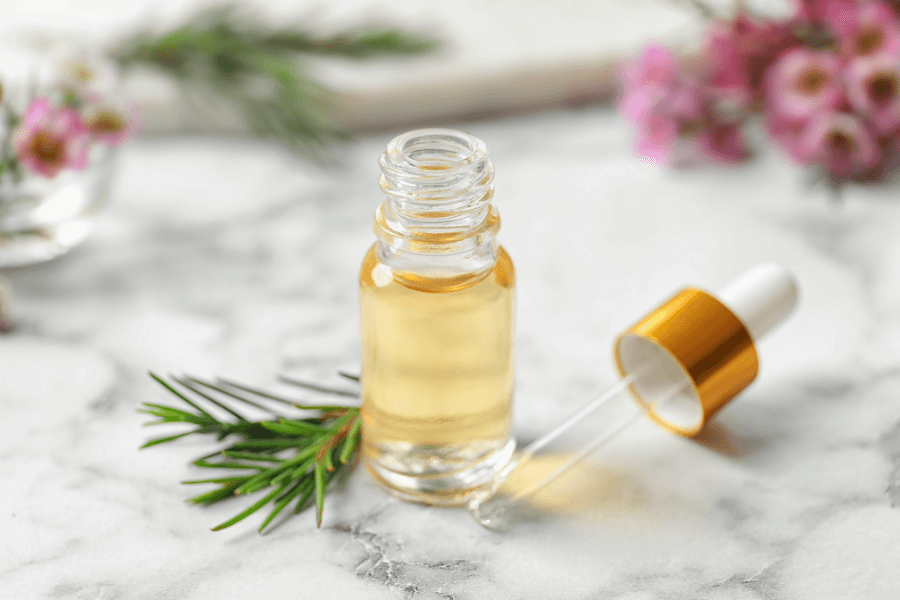
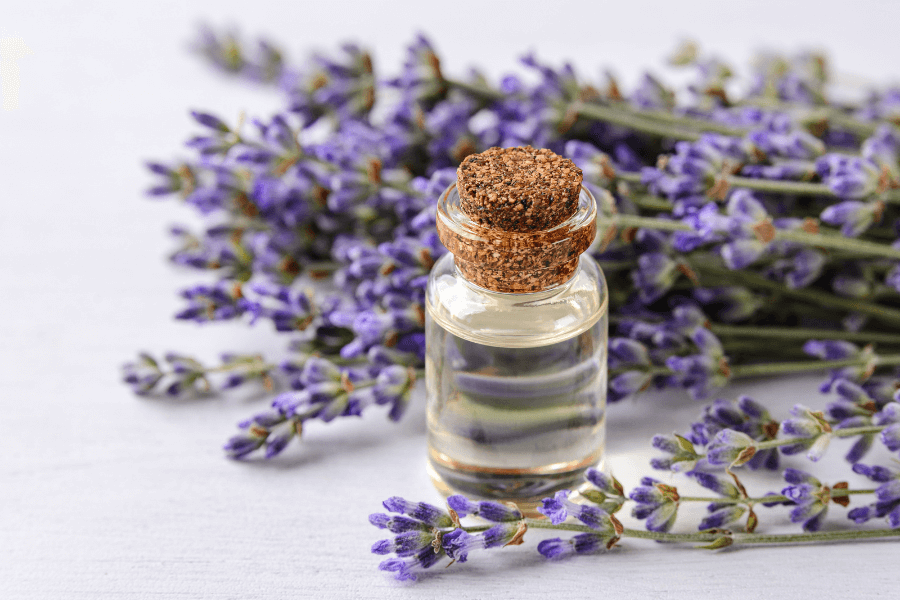
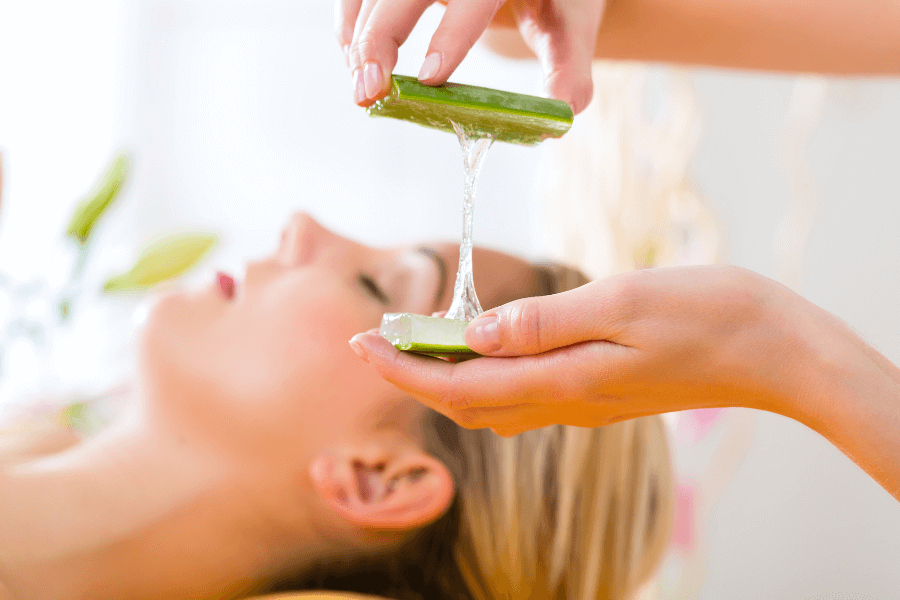
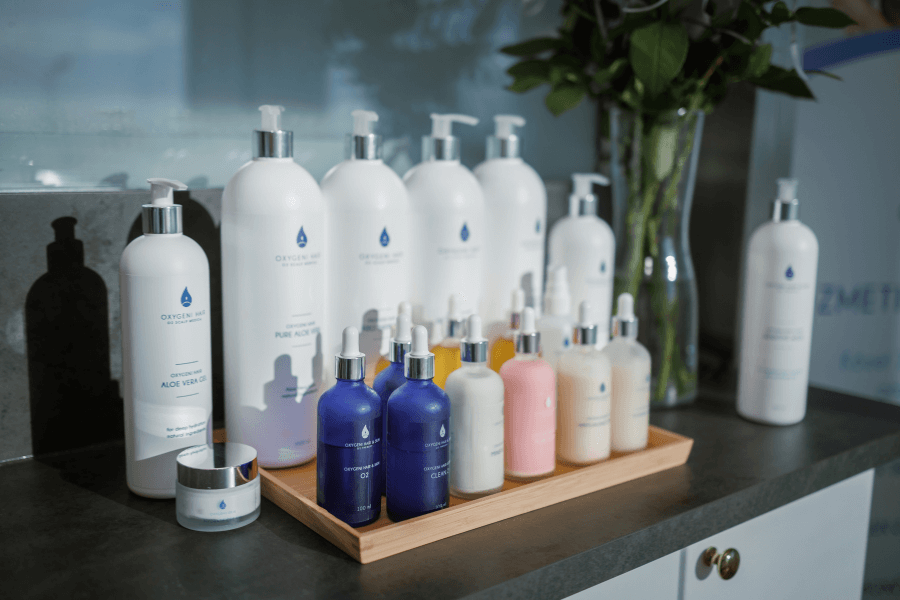
Importance of Natural Cosmetics
Using natural cosmetics is beneficial because they are free from chemicals and irritating substances, making them gentle on the skin. Natural ingredients, such as plant oils and extracts, are rich in vitamins and antioxidants, which support skin regeneration and health. Natural cosmetics minimize the risk of allergic reactions and can be safely used in the long term.
Natural Ingredients for Scar Treatment:
The natural ingredients used in scar treatment include aloe vera, calendula, tea tree oil, and lavender oil. These components have anti-inflammatory, antibacterial, and skin-soothing properties that promote skin healing and reduce scar visibility. Regular use of products containing these ingredients can improve skin condition and support scar healing.
Aloe Vera: Aloe vera is well-known for its excellent skin regeneration and healing properties. Thanks to its antioxidant and anti-inflammatory properties, it reduces skin irritation and redness, promoting scar fading. Additionally, its moisturizing properties help maintain skin elasticity, which is also important for scar treatment.
Calendula: Calendula has anti-inflammatory and antibacterial properties, which aid in skin healing, reduce swelling and pain, and stimulate collagen production, essential for scar regeneration.
Tea Tree Oil: Tea tree oil is known for its antibacterial and antifungal properties. These attributes help prevent infections around wounds, allowing scars to heal more quickly. Moreover, tea tree oil’s anti-inflammatory effects not only reduce redness and swelling but also promote the formation of new skin cells.
Lavender Oil: Lavender oil is an excellent scar treatment ingredient due to its soothing and anti-inflammatory effects, as well as its antimicrobial properties, which help prevent wound infections. Lavender oil stimulates blood circulation and supports skin cell renewal, contributing to the accelerated fading of scars.
Recommended Cosmetics for Scar Treatment
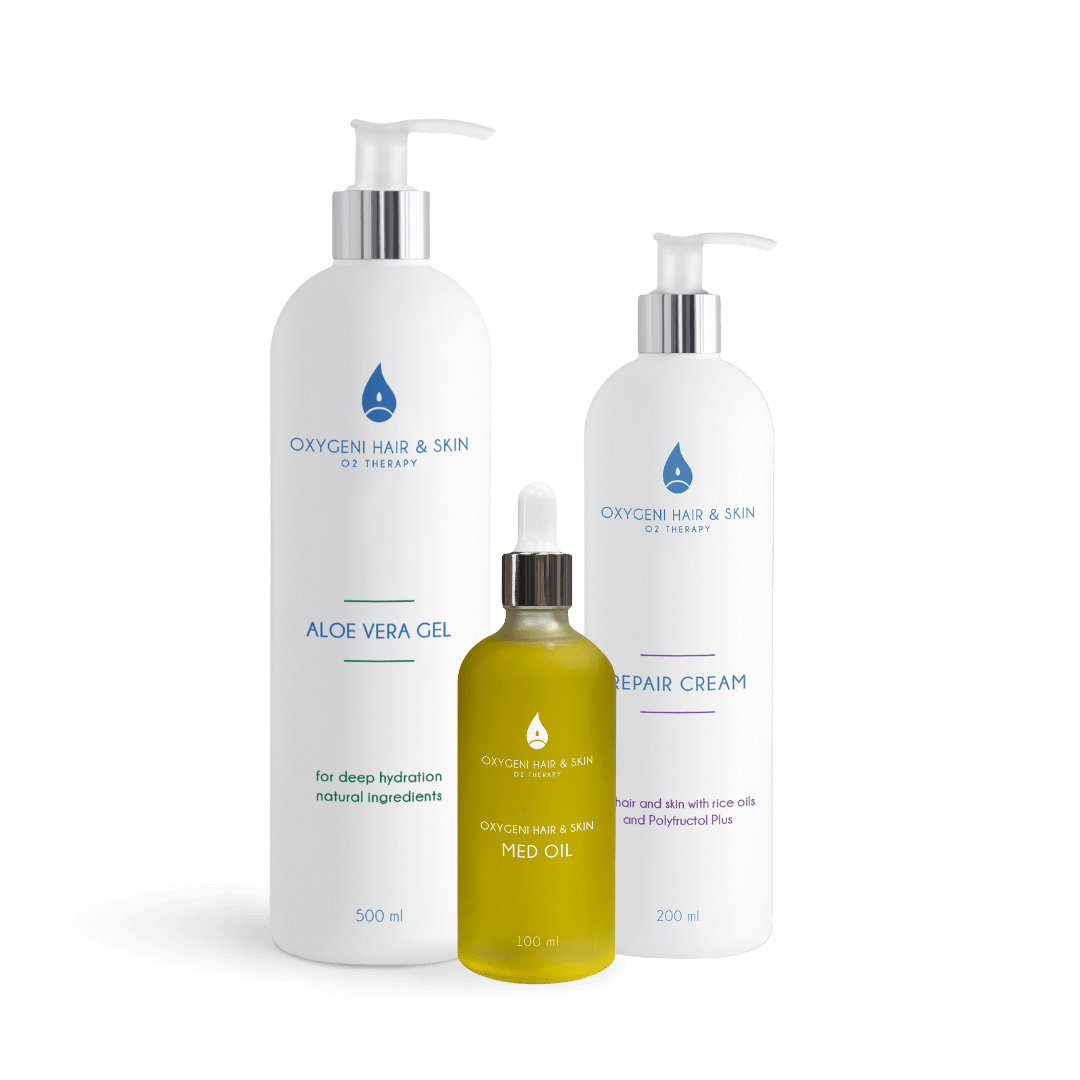
When treating scars, it’s beneficial to use cosmetics that promote skin healing and reduce inflammation. These include moisturizing creams, gels, and oils.
Our recommendation for scar treatment:
Moisturizing creams are crucial for effective skin regeneration. The Repair Cream is specifically designed for skin restoration, making it ideal for scar treatment. Its high active ingredient content stimulates skin regeneration, reducing scarring and preventing the formation of new scars. Regular use of the cream helps restore skin elasticity, improving the overall appearance and condition of the skin, and can boost self-confidence affected by scars.
In addition to proper hydration, using antioxidant-rich products is essential as they support skin renewal and protect it from free radical damage. Aloe Vera Gel, similar to the Repair Cream, is rich in antioxidants and is excellent for scar treatment. Its natural ingredients aid in skin regeneration, reduce scarring, and speed up wound healing. The cooling effect of aloe vera also alleviates pain and skin irritation, making the home skincare routine more comfortable.
Incorporating Med Oil into your routine is beneficial as this special oil blend deeply hydrates and nourishes the skin, aiding in scar healing. The natural ingredients in the oil enhance further hydration of the skin and help make it firmer and smoother. Regular use of the oil reduces scar visibility by softening and regenerating the damaged skin surface.
How to Use the Products?
1.
We recommend starting with Aloe Vera Gel. It can be used as a carrier substance, allowing serums and oils to penetrate the skin more effectively, but it also works well as a face mask. After cleansing the face, apply a small amount of gel and gently massage it into the skin before moving on to the next product.
2.
Before applying Med Oil, ensure the Aloe Vera Gel is not completely absorbed, so the antioxidants in the oil can penetrate the skin more effectively.
3.
Once the oil is fully absorbed, apply the Repair Cream as the final step. Massage it into the skin and do not rinse off. This helps the active ingredients reach the deeper layers of the skin for maximum effectiveness.

